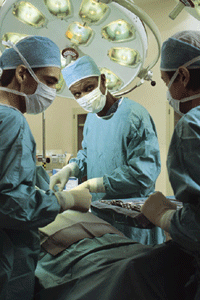Breast pumps for breast enlargement - do they work?

As you may know, the FDA has approved a single example of a breast pump for breast enlargement (Brava). Even so, dozens of breast pumps for breast enlargement are advertised in the back pages of women's magazines and on the Internet.
Can breast pumps be used for breast enlargement? How do they work? And, most importantly, are they a viable solution for women who want bigger breasts?
How breast pumps work

Breast pumps work through the physiological process known as tissue expansion. Basically, if you apply a gentle pressure to stretch skin or other soft tissues, they slowly stretch. If you've ever seen a person with oversized ear plugs or a native tribesman with a large ornament in his lip, you've seen tissue expansion at work.
By applying relatively gentle vacuum pressure to the breasts, breast pumps encourage the process of tissue expansion. Over time, this leads to a modest but permanent increase in breast size. This applies to the Brava breast pump, which is to be worn approximately 12 hours per day.
Another, temporary, type of breast pump is also available (usually for less than $30). These manual breast pumps consist of a plastic dome and a small hand pump. By applying a greater vacuum force to the breast, this type of pump encourages blood to engorge the breast and nipple. This increases breast sensitivity and also can increase size slightly, but these gains are temporary, disappearing within two hours.
Are breast pumps a viable breast enlargement solution?
Temporary breast pumps are not a viable breast enlargement solution. In fact, overuse of this type of breast pump may cause broken blood vessels and other health issues.
The Brava system certainly does work. But there are some significant drawbacks:
- It's expensive. At about $2500, cost is a significant factor for most people.
- It works slowly. The Brava system needs to be used for about 6 months for maximum results.
- It should be worn 12 hours per day. Even though the Brava breast pump is fairly low-profile, rather like a padded bra, many people find this recommendation difficult to follow.
- Gains are modest. On average, women gain from 1/4 to 1/2 cup even after following all the guidelines faithfully.
Considering that breast enlargement pills and creams can create more impressive results, without the 12 hour per day constraint, why would anyone choose Brava? Mainly, because it has been approved by the FDA and is peddled by many doctors (who receive commissions on each unit sold). Breast enlargement pills and creams have not been approved by the FDA and therefore are not given fair hearing by most doctors.



